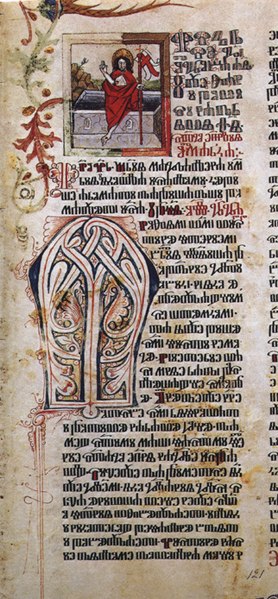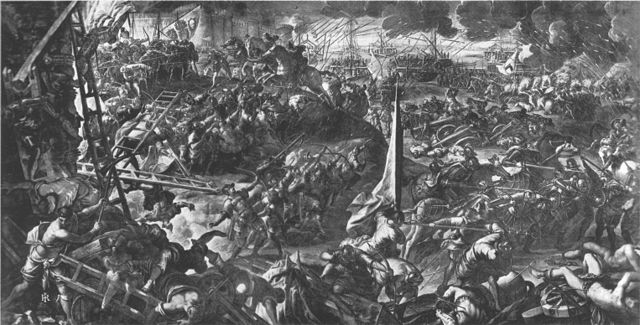The Lapčan family was one of the twelve noble tribes of the Kingdom of Croatia, mentioned in the Pacta conventa. Their seat was in the town of Lapac in the former Luka županija, Dalmatia. Their noble rights were confirmed in the second half of the 13th century until when were jobbágy. In the 14th century branched Karinjani, with seat in Karin, whose name would eventually become more dominant than of Lapčan. The family's coat of arms is described in the 15th century and united with the one by Kurjaković family in the mid-17th century, it became used by the Austrian-Bavarian Sinzendorf noble family.
Coat of arms from St. Gallen-Haggenberg (1470-90s)
The Lapčan (right) and Kurjaković (left) joint coat of arms, from Siebmachers Wappenbuch in 1605.
Page of Drugi Novljanski Brevijar by Priest Martinac from 15th century.
Croatia in personal union with Hungary
The Kingdom of Croatia entered a personal union with the Kingdom of Hungary in 1102, after a period of rule of kings from the Trpimirović and Svetoslavić dynasties and a succession crisis following the death of king Demetrius Zvonimir. With the coronation of King Coloman of Hungary as "King of Croatia and Dalmatia" in 1102 in Biograd, the realm passed to the Árpád dynasty until 1301, when the (male) line of the dynasty died out. Then, kings from the Capetian House of Anjou, who were also cognatic descendants of the Árpád kings, ruled the kingdoms. Later centuries were characterized by conflicts with the Mongols, who sacked Zagreb in 1242, competition with Venice for control over Dalmatian coastal cities, and internal warfare among Croatian nobility. Various individuals emerged during the period, such as Paul I Šubić of Bribir, who was representing the most powerful Croatian dynasty at the time, the Šubić noble family. These powerful individuals were on occasion able to de facto secure great deal of independence for their fiefdoms. The Ottoman incursion into Europe in the 16th century significantly reduced Croatian territories and left the country weak and divided. After the death of Louis II in 1526 during the Battle of Mohács and a brief period of dynastic dispute, both crowns passed to the Austrian House of Habsburg, and the realms became part of the Habsburg monarchy.

Death of the Last Croatian King, by Oton Iveković
Coin of Louis II of Hungary with inscription on Latin: "Louis by the grace of God King of Hungary, Dalmatia, Croatia"
Siege of Zadar in 1202 by the Crusaders and Venetians
Kingdom of Croatia and Dalmatia in the late 12th century (light green)







